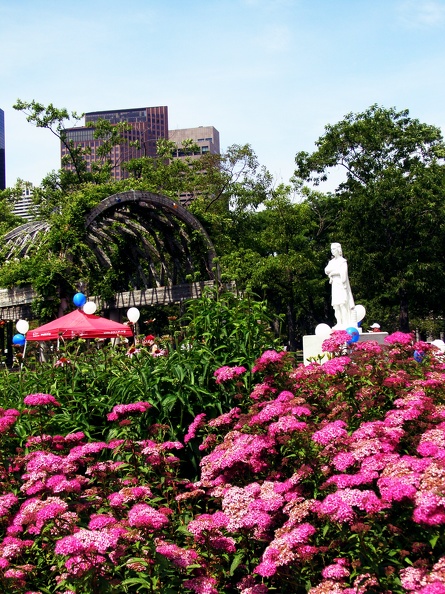Attorney General William Barr recently expressed the same sentiments that I have been writing about for a long time on this blog: that the restrictions on people’s freedom of movement and association that have been implemented during the Covid-19 pandemic are a violation of individual rights.
“You know, putting a national lockdown, stay at home orders, is like house arrest,” Barr said during a Constitution Day speech at Hillsdale College. “Other than slavery, which was a different kind of restraint, this is the greatest intrusion on civil liberties in American history.”
Unsurprisingly, various authoritarian politicians and commentators criticized Barr’s remarks.
Joe Biden asked rhetorically, “Did you ever, ever think, any of you that following the recommendations of the scientific community to save your and other peoples’ lives is equivalent to slavery, people being put in chains?”
Rep. James Clyburn called Barr’s comments “the most ridiculous, tone-deaf, God-awful things I’ve ever heard” and pointed out that “slavery was not about saving lives,” while “this pandemic is a threat to human life.”
Harvard law professor Laurence Tribe called Barr’s comments an “obscene comparison” and called Barr “an evil fool.”
Sunny Hostin of The View tweeted, “Statements like these make you realize many in this country know nothing about what it truly means to be oppressed.”
“If you think that this is the greatest intrusion on civil liberties in American history, I’d suggest you read up on the Alien Sedition Acts,” complained historian Jon Meacham. “I’d suggest you talk to the Japanese Americans who were interned during the Second World War. Talk to the victims of Joe McCarthy. Talk to the victims of one of Barr’s predecessors, A. Mitchel Palmer, who led raids in 1919 and 1920 as part of the first Red Scare. And talk to the Black folks who, in my native region, lived under apartheid until about 60 years ago… We’re talking about scientifically uncontroversial public health measures. This is not some ideologically-driven plot on behalf of the public health officials, and the alleged deep state, to change American lives. It’s to try to save American lives because of a global pandemic.”
It is disturbing that so many prominent individuals believe that telling people they cannot leave their homes for any but essential purposes is no big deal. Let’s address their arguments one by one:
First of all, contrary to Clyburn’s and Tribe’s claims, Barr’s comments are neither ridiculous, nor God-awful, nor obscene, and Barr is neither evil nor a fool. Rather, Barr’s comments are correct, and he is a good and intelligent person for making them. It is the criticisms of Barr that are ridiculous, awful, and obscene, and the people defending lockdowns who are evil. As for Clyburn’s allegation that Barr’s comments are “tone-deaf,” I do not understand this criticism. What is relevant is whether the content of a statement is right or wrong, not the tone in which it is expressed. Barr’s statement was right, and desperately needed. Therefore, it was right of him to make it.
Second, there is the argument, made by Biden and Meacham for example, that because stay-at-home orders were “scientifically uncontroversial” and recommended by experts in public health, they do not violate civil liberties. But the fact that something is recommended by the scientific community has nothing to do with whether or not it is an intrusion on civil liberties. One can accept the claim that stay-at-home orders are the best way to slow the spread of the virus while at the same time believing that they are morally wrong. This is because factual claims and moral claims are completely different and independent. Science is a great way of gaining factual knowledge, e.g. how the world works, which things tend to be correlated with each other, which are the best ways of achieving particular outcomes. But science cannot tell us anything about moral right and wrong, e.g. what constitutes justice, which rights people have, whether or not a particular action violates civil liberties. Only philosophy – thinking logically about a topic – can do that.
Similarly, Barr’s critics make the argument that because stay-at-home orders were motivated by the desire to save lives, they do not violate civil liberties. But the motivation of an action has nothing to do with whether or not it violates civil liberties. Clyburn is correct that slavery was not about saving lives, while the pandemic is a threat to human life, and saving lives is the motivation behind the lockdown measures. But this is irrelevant. Meacham may be correct that public health officials are not motivated by any sinister desire to destroy people’s freedoms. But regardless of their motivation, destroying people’s freedoms is what they are doing. Restricting liberty in the way that governors around the country have done during the coronavirus pandemic is morally wrong regardless of its motivation and regardless of how many infections it prevents or lives it saves.
Then there is Hostin’s claim that opponents of stay-at-home orders “know nothing about what it truly means to be oppressed.” Actually, it is defenders of stay-at-home orders who know nothing about what it means to be oppressed. Remember, we are talking about state and municipal governments telling their citizens that they cannot walk around at parks or beaches, go to church, buy guns (a right explicitly protected by the Constitution), or get together with other people. We are talking about state and municipal governments forcibly closing all sorts of businesses, from restaurants to sports teams to barbershops to book stores to clothing stores. We are talking about governments telling their citizens that even for those few “essential” purposes for which they are allowed to leave their homes, they must do so as seldom as possible and avoid stopping to browse or chat. We are talking about governments requiring their citizens to disclose their recent contacts and whereabouts for contact-tracing purposes. That this is oppression is an understatement. Anyone who cannot see this has no idea what oppression is.
And finally there is Meacham’s list of incidents from history that he claims are worse intrusions on civil liberties than stay-at-home orders. Some of the items on the list are, indeed, violations of civil liberties. But none of them are worse than the restrictions on people’s freedoms that have been implemented during the coronavirus pandemic. The internment of Japanese Americans during World War II, for example, was certainly wrong, but it affected 112,000 people, while the coronavirus restrictions take away the liberty of every single person in America (approximately 320 million people). The Alien and Sedition Acts, McCarthyism, and Palmer’s raids did violate the rights of the individuals targeted, but this is nowhere near as problematic as stripping away freedom of movement from the entire populace. No one would defend Jim Crow laws, but if it’s wrong to force people to use segregated restaurants, stores, and beaches, isn’t it even more wrong to ban people from these places entirely? In scope and scale, in terms of the number of people harmed, the number of rights taken away, and the areas of life affected, none of the historical events mentioned by Barr’s critics matches the wide-ranging deprivation of freedom inflicted by governments in response to the pandemic.
To sum up, the arguments against Barr and in defense of stay-at-home orders are ignorant, illogical, offensive, and wrong. Barr should be commended, not insulted, for speaking out in defense of the Constitution and individual rights. However, there is one respect in which I disagree slightly with Barr’s comments. I would get rid of the “other than slavery” part, because I believe that stay-at-home orders are worse than slavery. Kudos to Attorney General Barr for condemning these restrictions as the egregious violation of civil liberties that they are.




